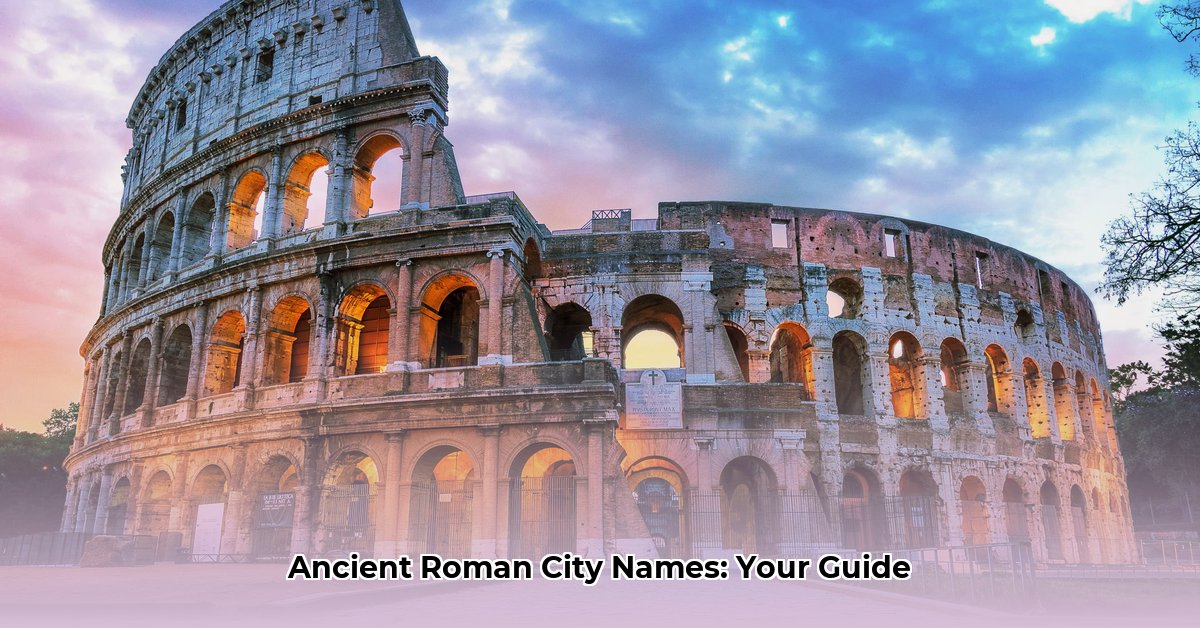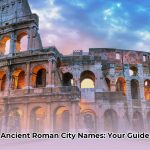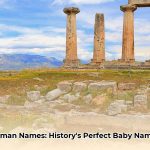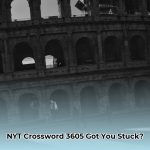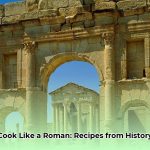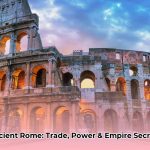Have you ever walked through historic European city centers and sensed an underlying order, a foundational logic beneath centuries of adaptation? Many of Europe’s most iconic urban landscapes, from London to Lyon, owe their very beginnings to the meticulous foresight of the ancient Romans. Far from arbitrary settlements, the cities of the Roman Empire formed an intricate, strategically planned network, each vital for governance, trade, and cultural diffusion. Their sophistication in urban design, from selecting defensible locations to constructing engineering marvels like vast aqueducts and intricate road networks, set a precedent for centuries to come. What profound insights can these ancient successes—and indeed, their inherent challenges—offer us for designing more effective, livable, and resilient metropolitan areas in the contemporary world? You can explore more about the ancient Roman cities here.
The Enduring Blueprint: Core Concepts of Roman Urban Development
The Romans were unparalleled pioneers in systematic urban planning, establishing enduring principles that profoundly resonate in modern global city layouts and comprehensive metropolitan planning. Their approach was inherently practical, focusing on creating environments that could efficiently sustain large populations and facilitate complex societal functions, from commerce to defense.
Decoding the Grid: Efficiency at the Foundation
Perhaps the most recognizable and enduring feature of Roman urban design was its foundational grid layout, known as centuriation when applied to land division. The cardo (the primary north-south street) and the decumanus (the principal east-west thoroughfare) formed the fundamental axes, structuring the entire city from its very core. This was more than an aesthetic preference; this rigid urban grid system provided an incredibly streamlined framework for land allocation, simplified navigation, and facilitated organized construction, rendering cities remarkably functional and easy to traverse. Consider the remarkable efficiency this system afforded for ancient Roman settlements in an era devoid of modern GPS or detailed maps. This deliberate organization allowed for rapid expansion and standardized development across vast and varied territories. Cities like Timgad in North Africa, founded by Emperor Trajan around AD 100, provide a pristine example of this almost perfectly square or rectangular grid, demonstrating the Romans’ commitment to order and functionality.
The Forum: The Empire’s Vibrant Civic Heart
At the bustling intersection of the cardo and decumanus typically lay the forum, the pulsating hub of Roman public and civic life. This central public square was far more than a mere marketplace; it was a multifunctional nexus where commerce thrived, religious ceremonies transpired, judicial decisions were rendered in basilicas, and crucial governmental debates unfolded in curias. Surrounded by temples dedicated to various gods, administrative buildings, and bustling shops, the forum exemplified the Romans’ emphasis on integrated communal spaces. These central public areas, whether the colossal Roman Forum or a smaller provincial one, served as the binding social fabric of the historical towns they established. Can modern urban planners effectively recreate such integrated, vibrant public areas to foster stronger community bonds and a genuine sense of shared identity in our increasingly fragmented cities?
Engineering Prowess: Aqueducts, Roads, and Sanitation
The capacity of Roman cities to sustain vast populations hinged critically on their unparalleled infrastructure. Roman engineering achievements were revolutionary for their time, underpinning the health, commerce, and productivity of the populace within these ancient urban centers.
- Aqueducts: These impressive structures, often spanning miles across valleys and plains, delivered fresh, clean water from distant sources directly into the urban centers, supplying public baths, ornate fountains, and private residences. The Pont du Gard in southern France, a stunning multi-tiered aqueduct bridge, stands as a testament to their hydraulic mastery.
- Road Networks: Roman roads, famous for their durability and efficiency, formed a sophisticated web connecting cities across the sprawling empire. Built with multiple layers of stone and gravel, these meticulously engineered arteries facilitated rapid troop movements, efficient trade, and reliable communication, acting as the very veins of the empire.
- Sewage Systems: Alongside the life-giving aqueducts, sophisticated sewage systems, such as Rome’s legendary Cloaca Maxima – a monumental covered sewer vital for waste removal – ensured a degree of public health remarkable for the ancient world. Originally an open drain from the 6th century BC, it evolved into a fully covered system by 100 AD, primarily serving wealthier districts but laying a foundational piece of Roman sanitation infrastructure.
Strategic Placement: Cities as Anchors of Empire
Beyond mere habitation, Roman cities frequently originated as strategic military outposts, gradually transforming into bustling economic and political hubs. Such strategic city placement allowed the Roman Empire to effectively project power and anchor its vast control, facilitating crucial trade routes and robust communication networks throughout its dominion. The port city of Carthage, for instance, initially an ancient Phoenician trading hub, was utterly destroyed by the Romans in the Punic Wars, only to be meticulously rebuilt as a Roman colony due to its unparalleled strategic position on the North African coast, vital for controlling Mediterranean trade and grain supply. Similarly, Londinium, established on the River Thames as a commercial center and major port, swiftly became the largest city in Roman Britain, a crucial passage point for trade goods further north. This long-term, deliberate planning was a testament to Roman ambition and logistical prowess, with city functions often evolving based on specific historical periods and shifting imperial priorities.
Mastering Urban Challenges: Lessons from Roman Adaptation
Even with their sophisticated designs, Roman cities grappled with urban challenges that offer surprising parallels to today’s metropolitan issues, particularly concerning waste management in ancient times, public health, and resource constraints. Understanding these historical “trade-offs” can refine our modern approaches.
Water Management and Sanitation Evolution
Ancient Rome’s impressive sanitation engineering, while groundbreaking, was often a complex system of varying effectiveness. While aqueducts provided abundant freshwater, the efficacy of waste removal varied significantly across social strata. The Cloaca Maxima, as noted, primarily served the elite and public facilities. Poorer citizens often relied on public latrines or rudimentary household pits, with waste frequently overflowing into the unpaved streets of their crowded insulae (apartment buildings). This highlights that even with advanced engineering, the equitable distribution and comprehensive management of urban services were persistent challenges.
Public Health and Urban Logistics
Despite existing legal restrictions, residents in lower-income areas often resorted to discarding refuse directly into streets, rudimentary sewers, or household pits. The absence of comprehensive municipal waste collection led to chronic unsanitary conditions and the gradual accumulation of refuse, sometimes visibly raising street levels. Historical records indicate ancient Roman cities used carrus estercolari (refuse carts) to transport waste outside city walls, aimed at mitigating pest infestations and foul odors. However, this system’s efficacy was far from perfect, contributing to the prevalence of disease. Furthermore, the widespread use of lead pipes in aqueducts, despite ancient warnings from figures like Vitruvius about potential health risks, embodies a fascinating historical trade-off where the immediate practical gains of material choice sometimes overshadowed long-term health foresight. This prompts us to consider the often unseen, long-term impacts of seemingly efficient solutions in modern infrastructure planning.
Resourcefulness and Recycling in Antiquity
Resource management in ancient Rome was driven by practicality. Recycling was a common and integral practice, with materials like ceramics, marble, and metals frequently repurposed for new constructions or objects. This pragmatic approach to resource scarcity offers a poignant lesson in sustainability. Public baths, central to Roman life, symbolized not only hygiene and leisure but also social interaction. However, paradoxically, these communal spaces, despite their grandeur, sometimes facilitated the spread of disease by mixing the sick with the healthy, illustrating a complex interplay between public utility and health challenges. The Romans’ ability to adapt and creatively reuse materials, coupled with their efforts to manage public health within the constraints of their technology, offers valuable insights into resilient urban living.
Adapting Ancient Wisdom: Principles for Modern Urbanism
Understanding the enduring strengths and adaptive challenges of Roman urban planning can profoundly refine our modern approaches, enabling us to design and build more livable, sustainable, and community-focused communities.
Reimagining Integrated Public Spaces
The Roman grid system’s efficiency for navigation and movement remains a valuable lesson for congested cities worldwide. However, the Romans’ genius also lay in their creation of integrated public spaces—forums, bathhouses, theaters, gardens, and marketplaces—that served as vibrant social and economic hubs. These spaces fostered genuine community interaction and significantly enhanced civic life, offering a stark contrast to contemporary urban designs that sometimes prioritize isolated economic efficiency over social cohesion. Can modern developers and planners better integrate pedestrian-friendly zones, accessible green spaces, and truly multifunctional public areas to foster the kind of authentic community engagement seen in ancient Roman layouts?
Sustainable Infrastructure and Green Urbanism
The Romans’ deep understanding of essential infrastructure, manifest in their clean water delivery via aqueducts and robust, albeit imperfect, waste management systems, underscores its critical role in public health and urban resilience. Today, as we confront the pressing realities of climate change, resource scarcity, and rapid urbanization, these ancient solutions offer powerful conceptual inspiration. Contemporary urban planners could draw on Roman principles to enhance sustainable resource management, prioritize durable construction, and build climate-resilient infrastructure. For instance, prioritizing green infrastructure (such as urban parks, permeable surfaces, and bioswales) and applying sustainable design principles that mitigate environmental impacts would echo Roman foresight in their foundational cities.
Empowering Modern Stakeholders
To effectively bridge the gap between ancient wisdom and contemporary needs, various stakeholders can adopt and adapt these timeless principles:
- For Historians and Archaeologists: Intensify efforts to integrate textual evidence meticulously with cutting-edge archaeological discoveries. This synergy is crucial for reconstructing the daily life, socio-economic structures, and Roman architecture of ancient Roman cities with unparalleled accuracy, providing comprehensive insights previously unattainable.
- For Urban Planners and Architects: Critically analyze the Roman grid system and their holistic design of public spaces. These elements provide adaptable models for developing sustainable, community-focused environments that actively promote social interaction, efficient resource management, and enhanced walkability.
- For Policymakers and Civil Engineers: Advocate for policies that incentivize the use of durable, sustainable materials in urban development, aiming to reduce the long-term environmental footprint of construction. Implement robust zoning regulations that ensure a balanced allocation of residential, commercial, and truly public spaces, fostering vibrant, functional, and integrated communities. Explore modular construction techniques, echoing Roman efficiency, for swift and adaptable infrastructure deployment, and design advanced sewage systems that incorporate natural filtration methods, minimizing environmental impact.
- For Tourism and Cultural Heritage Agencies: Expand and promote cultural heritage tourism around well-preserved Roman sites. This initiative not only significantly boosts local economies but also offers invaluable educational opportunities, emphasizing the profound importance of historical preservation and sustainable tourism practices for historical towns and their surrounding regions.
Applying the Roman Model: A Holistic Approach to Contemporary Urban Development
The strategic deliberation behind Roman city placement and their systematic approach to urban development continues to inform and inspire contemporary urban strategies. The Romans executed their urban planning with a profound sense of functionality, ensuring that a well-organized city could effectively serve its people, facilitate commerce, and project imperial power. This comprehensive approach, balancing military needs, administrative efficiency, and civilian development, offers a robust model.
| Pros of Roman-Inspired Urbanism | Considerations for Modern Application |
|---|---|
| Enhanced Navigation and Traffic Flow: Grid-based layouts inherently improve traffic flow efficiency and simplify urban navigation. | Potential for Monotony: Strict grid patterns, if not varied with contemporary design elements, could lead to a monotonous urban landscape. |
| Improved Public Health: Reliable water supply and efficient waste removal systems dramatically improve public health and hygiene. | High Initial Investment: Implementing comprehensive, high-quality infrastructure (like aqueducts or advanced sewage) requires substantial initial investment, though delivering significant long-term benefits. |
| Promotion of Civic Engagement: Dynamic public spaces (forums, plazas) foster strong community bonds and encourage social interaction. | Adaptability Challenges: Direct replication faces challenges in integrating into existing, diverse urban contexts and adapting to the scale and complexity of modern societal needs. |
| Durable and Sustainable Construction: Emphasis on durable materials (e.g., Roman concrete) significantly increases longevity and reduces environmental impact. | Balancing Preservation: A continuous challenge involves balancing the preservation of historical Roman sites with the demands of contemporary urban development and expansion. |
| Efficient Infrastructure Deployment: Modular construction techniques employed by Romans allow for faster development cycles and scalability. | Integrating Green Infrastructure: Space constraints in high-density urban environments can make it challenging to integrate natural filtration methods and ample green infrastructure effectively. |
While direct replication of all Roman infrastructure in today’s densely populated urban areas may not always be feasible or equitable, especially considering historical social structures, their fundamental principles offer profound guidance. By understanding both the triumphs and inherent limitations of Roman urban planning, we gain invaluable insights for crafting more livable, sustainable, and community-focused metropolitan areas for the future. The enduring legacy of the ancient Roman approach lies not just in specific Roman city names or their magnificent ruins, but in a holistic design philosophy that continues to inspire and inform, promising more resilient and harmonious urban environments for generations to come.
Citations
- https://en.m.wikipedia.org/wiki/Sanitation_in_ancient_Rome
- https://www.menofpompeii.com/ancient-roman-urban-wisdom-7-revolutionary-planning-principles-that-could-save-our-dying-cities/
- https://eraofinvention.com/roman-urban-planning-techniques/
